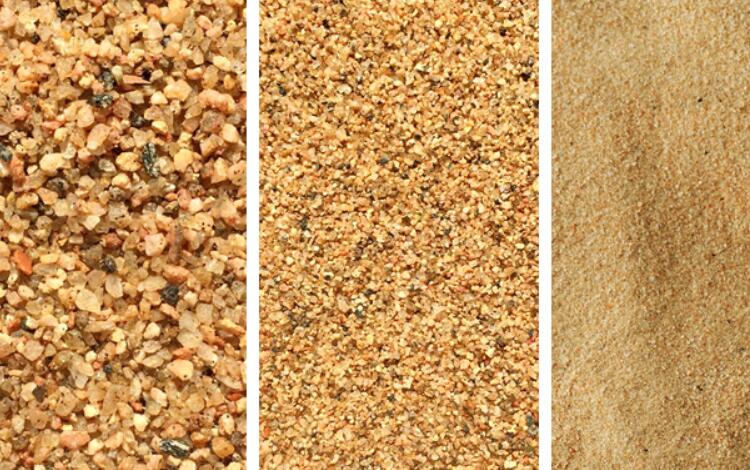How to distinguish the quality of sand

Sand is the main raw material for the production of concrete, accounting for about 40% of the aggregate. With the shortage of river sand resources, artificial sand has gradually become the direction of the future construction market due to its wide sources and easy quality control. However, there are many types of sand in the current market, and it is difficult to distinguish between good and bad. How is the quality?
When identifying the quality of sand, focus on checking the fineness modulus, particle gradation, mud content, mud content, moisture content, debris and other indicators of the sand.
To initially judge the quality of sand, we mainly rely on four methods: "looking, pinching, rubbing, and throwing". You can know the quality of sand and gravel in just one minute.
"Look", grab a handful of sand and spread it in the palm of your hand, and carefully look at the uniformity of the distribution of coarse and fine sand particles. The more uniform the particle gradation distribution at all levels, the better the quality;
"Knead", the moisture content of the sand is determined by kneading it with hands. After pinching, observe the tightness of the sand mass. The tighter the sand mass, the higher the moisture content, and vice versa;
"Rub", grab a handful of sand in the palm of your hand, rub it with both palms, and then clap your hands gently to see the mud layer adhering to the palm of your hand. The more mud layer and yellow color, it means that the sand contains high mud content, otherwise it has low mud content;
To "throw", pinch the sand and throw it in the palm of your hand. If the sand ball is not loose, it can be judged that the sand is fine, contains mud or has high water content.
Author: Xingaonai
Reprint address: https://www.xgncrusher.com/Industralnews/207.html